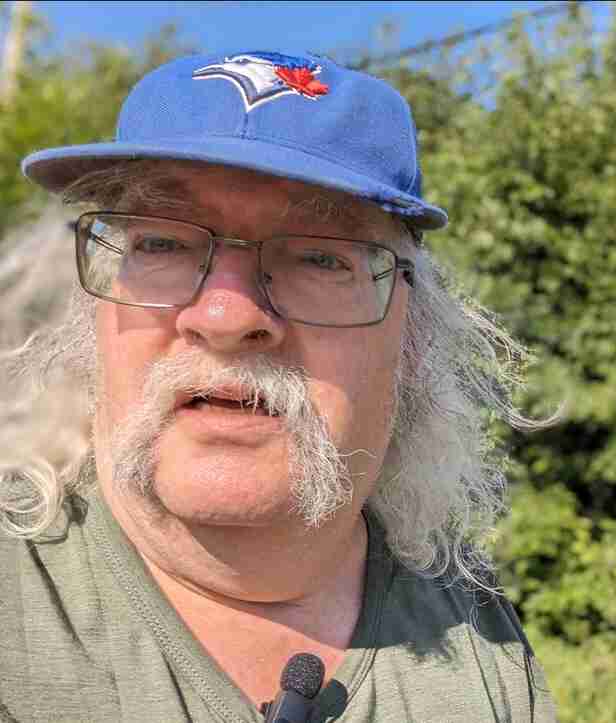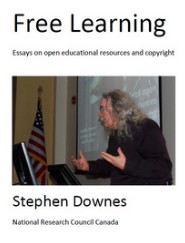If you think there's something to cognitive load theory then you're probably implictly endorsing what Eric Schwitzgebel references here, the Global Workspace Theory. "Its central claim: You consciously experience something if and only if it's being broadly broadcast in a 'global workspace' so that many parts of your mind can access it at once -- speech, deliberate action, explicit reasoning, memory formation, and so on. Because the workspace has very limited capacity, only a few things can occupy it at any one moment." The question he asks is, can we test it by contemplating our own perceptual experiences at any given moment? When we ask people, he says, we get a completely mixed bag of responses (in my case I add a lot of extra stimulation, like the music I'm listening to and the scene out the window, in order to fill the vast gaping void that is my attention span).
Today: Total: 2025/12/12 [Direct Link]Select a newsletter and enter your email to subscribe:
Stephen Downes works with the Digital Technologies Research Centre at the National Research Council of Canada specializing in new instructional media and personal learning technology. His degrees are in Philosophy, specializing in epistemology, philosophy of mind, and philosophy of science. He has taught for the University of Alberta, Athabasca University, Grand Prairie Regional College and Assiniboine Community College. His background includes expertise in journalism and media, both as a prominent blogger and as founder of the Moncton Free Press online news cooperative. He is one of the originators of the first Massive Open Online Course, has published frequently about online and networked learning, has authored learning management and content syndication software, and is the author of the widely read e-learning newsletter OLDaily. Downes is a member of NRC's Research Ethics Board. He is a popular keynote speaker and has spoken at conferences around the world.

Stephen Downes,
stephen@downes.ca,
Casselman
Canada
"We're cautiously supportive of pay-to-crawl systems." The new Creative Commons - not to be confused with the organization that used to support open content sharing - has announced its opinion on 'pay to crawl'. To be clear, "Pay-to-crawl refers to emerging technical systems used by websites to automate compensation for when their digital content - such as text, images, and structured data - is accessed by machines." Here's a CC-authored issue brief. And their position? "Cautiously supportive." This despite all the bad things about such a policy, some of which are even acknowledged by Creative Commons: "pay-to-crawl systems could be cynically exploited by rightsholders to generate excessive profits... (they) could become new concentrations of power, with the ability to dictate how we experience the web... (they) could block off access to content for researchers, nonprofits, cultural heritage institutions, educators, and other actors working in the public interest." All of this would seem to me to make them unambiguously bad. Can the seven principles CC calls for actually protect a free and open web community? Not a chance.
Today: Total: Annemarie Eayrs, Creative Commons, 2025/12/12 [Direct Link]I can understand, I support, why students' use of AI in the classroom might be considered a problem to solve. After all, it may still be true that students need to learn skills that can now be done at a fraction of the cost by machine. But it does trouble me when the natural response is to embrace authoritarianism. Consider the 'lessons' learned by Donald Saucier here: "have a useful AI policy in my courses... not allowing AI for at least some of the coursework... actions and consequences if students violate my stated AI policy... spacing out assessments." I find this stance remarkable in that it doesn't even consider changing what is taught, how it's taught, how it's assessed, and who should make the rules.
Today: Total: Donald A. Saucier, Faculty Focus, 2025/12/12 [Direct Link]I love it when people actually look at the data when considering how to assess arguments based on some data set or another, like this one (archived) that says, in part, "33 percent of eighth graders are reading at a level that is 'below basic' ... That is the highest share of students unable to meaningfully read since 1992." So, we have data about a similar cohort? "This seems like a perfect chance to do a little research. After all, those low scoring children of 1992 and 2000 are now grown up. Class of 1992 would be about 45 now, and the sad non-readers of 2000 would be about 34." Now we can't "dismiss the possibility that these low-scoring readers did not in fact suffer consequences." After all, "both cohorts would have been old enough to vote in the 2016 and 2024 elections." But putting taht on this specific cohort seems a little harsh. More likely, we should conclude that "Back in 1992 we had the lowest NAEP reading scores ever and that was followed by life going on as before. Those low scores didn't signal a damned thing."
Today: Total: Peter Greene, National Education Policy Center, 2025/12/12 [Direct Link]I've had this item in the queue for a couple of weeks while I followed up some of the links (and qobuz in particular) and pursued other topics. But I didn't want to let it just pass by - Spotify is one of those services that is trying to consolidate the entire sector, underpay artists, overcharge audiences, and wreck a part of the open internet - podcasting - that lets ordinary people talk to each other. I've gone through some awful streaming services over the years and settled on Tidal, which I see here is more fair to artists than most. It could all be done better, though (I confess to also enjoying and sharing live concerts on YouTube and if there are any other real way to watch and listen to these I'd be open to it).
Today: Total: Brian Merchant, Blood in the Machine, 2025/12/12 [Direct Link]I've frequently referenced 'harmony' as a value worth seeking, but without delving much into exactly what I mean by it (if you push me, you'll get metaphors, like "walking in silence in a perfectly still forest" or some such). This article looks at Hasko von Kriegstein's Well-Being as Harmony to identify three major aspects (paraphrased): knowledge as a type of harmony between mind and world, a pro-attitude toward events in the world, and a fitting response to the world. Eric Schwitzgebel then adds a fourth: "we enrich (the world) in new ways that resonate with the ways in which it is already rich." It's interesting (to me) that none of these is an 'inner' sense of harmony, which is probably where I'd tend to think of it. Something like (to borrow the same four categories): consistency of knowledge and experience; fluidity in thought and motion; resonance with sensations and interactions; and engagement in growth and creation.
Today: Total: Eric Schwitzgebel, The Splintered Mind, 2025/12/11 [Direct Link]Web - Today's OLDaily
OLDaily Email - Subscribe
Web - This Week's OLWeekly
OLWeekly Email - Subscribe
RSS - Individual Posts
RSS - Combined version
Podcast - OLDaily Audio
Websites
Stephen's Web and OLDaily
Half an Hour Blog
Leftish Blog
MOOC.ca
Stephen's Guide to the Logical Fallacies
gRSShopper
Let's Make Some Art Dammit
Email: stephen@downes.ca
Email: Stephen.Downes@nrc-cnrc.gc.ca
Skype: Downes
Professional
National Research Council Canada
Publications
Presentations
All My Articles
My eBooks

About Stephen Downes
About Stephen's Web
About OLDaily
Subscribe to Newsletters
gRSShopper
Privacy and Security Policy
Statistics
Archives
Courses
CCK 2008, 2009, 2011, 2012
PLENK 2010
Change 11 - 2011
Education Futures - 2012
Learning Analytics - 2012
REL 2014
Personal Learning - 2015
Connectivism and Learning - 2016
E-Learning 3.0 MOOC - 2018
Ethics, Analytics - 2020

stephen@downes.ca
Last Updated: Dec 13, 2025 12:37 a.m.


